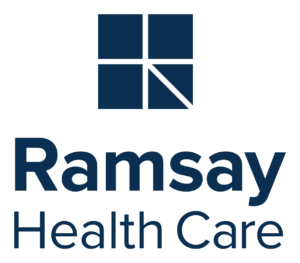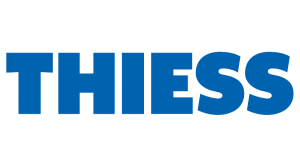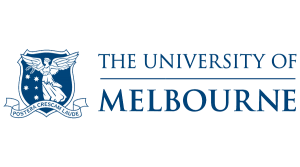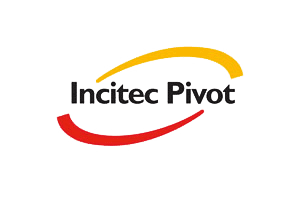“My biggest concern was helping my daughter transition. The workshops were very helpful and provided me the opportunity to talk about it in a non judging atmosphere. The resources provided were great.” Helen Murphy

Trusted Training Program For HR, Relocation & Mobility Practitioners working for














Registration Close: 24 May 2024
Unit 1 Starts: 4 June 2024
TEMi Members: AUD $4346
Non-Members: AUD $4829
*PRICES INCLUSIVE OF GST
After completing the GMP1® course, you’ll have a clear understanding of the core strategic and operational elements required to effectively deliver a global talent mobility program. You’ll also have an excellent addition to your professional CV.
By completing these four units, you’ll achieve a certification endorsed by your industry body that sets you apart as a global talent mobility specialist.
Explores drivers of global mobility; the alignment between mobility and talent management more broadly; emerging cross-border move types and their impact on policy design; how global business models are changing to become more agile.
Examines the mobility life-cycle as part of an employee journey; academic theories underpinning a successful Talent Mobility Program; transformative approaches reshaping the mobility supply chain and how you engage suppliers; effectively managing the employee experience.
Covers the compensation packages needed to support a mobile workforce; how remuneration and benefits are evolving given the rise of ‘agile’ workers; how local regulations and customs can affect rewards; different tax and payroll methodologies.
Addresses the tax and immigration implications of managing a mobile workforce; how to balance compliance and organisational agility; duty of care and risk management obligations; common employment relationship structures, documents and legal terms.
“My biggest concern was helping my daughter transition. The workshops were very helpful and provided me the opportunity to talk about it in a non judging atmosphere. The resources provided were great.” Helen Murphy
“Before the workshops I was worried about arriving in a new country, supporting and sorting my family needs, making new friends, and finding time and things for me. The workshops gave me focus, with a friendly facilitator brimming with helpful resources” Emma Unsworth
“The workshops are about helping each other to settle in and cope with this new life. They help to make it more relaxing and less challenging. We have the opportunity to share our experience, and laugh about it!” An Expat Mum
The GMP1 is a great training opportunity to gain the necessary knowledge required to understand and navigate the global mobility world and its challenges. The 4 training modules provide extensive information for professionals in the mobility industry, catered to either new mobility professionals or experienced ones who are keen to boost their career. This is not the usual online training, but more like a platform that allows collaborative exchange with professionals who want to improve their processes and develop a better employee experience in their respective companies. Each learner is able to proactively participate during the courses, ask questions and share their experiences.
“I really appreciate all your support and guidance with this course – its been such an incredible experience, and I am definitely a little devastated that we have wrapped it up. “
The GMP1 course gave me confidence to apply the foundations of global mobility in my day-to-day work. Deb presented complex concepts in a simple, fun and informative way. Her sessions were the highlight of my month! My fellow course members were also extremely supportive, and the group setting helped me to learn so much from each of their experiences. I also loved the quizzes at the end of each module, because they helped me to check my knowledge and reinforce my understanding. Highly recommended for anyone in global mobility regardless of your experience and level!
“The GMP1 program has been pivotal in increasing my understanding in the global mobility space…. The interactive dynamic with the other attendees is great and I look forward to the class each time. After completion, I know that I will be able to take what I have learnt and implement it within my organisation for greater outcomes. “
“Thank you for the insightful and thought-provoking session. Looking forward to delving deeper into the ’empty room thinking'”
“Thank you for a really lovely lunch and networking opportunity yesterday. I thoroughly enjoyed getting to know you better as well as connecting with familiar as well as not as familiar GM peers”
“As an expat myself, I enjoy being a part of the TEMi Leadership Huddle community to share my own experiences with others while learning from each other as well. It is great to know I can lean on the great peers we have in the industry and at the same time be a part of this group. The get-togethers help form strong relationships.”
“The minimum requisites of experience and seniority when joining a Huddle, has brought together a highly experienced like-minded group of professionals who can have detailed conversations and share firsthand experiences and solutions that work.”
“Being able to share knowledge and experience with others facing the same challenges in a small and intimate group makes these discussions valuable. There are no hidden agendas – it’s all about sharing information and knowledge.”
“Meeting on a regular basis and being in a small group helps build trust and strong relationships, encouraging rich discussions and debates with concrete and pragmatic examples.”
“Thank you so much for facilitating these sessions. It’s quite a special group to be a part of and I feel rather privileged!”
“Wow – what an amazing night. I can’t even begin to imagine the efforts that went in behind the scenes to make an evening like that come together.”
“Fantastic presentation. So many valuable insights. Thank you!”
“Thank you – great presentation and some great pieces to reflect on.”
“I value the input from other Global Mobility professionals and the breadth of discussions held. The discussions are very insightful and strategic. The fact that the TEMI huddle organises subject matter experts to help us broaden our knowledge is extremely beneficial.”
“Bringing together senior Mobility leaders from different organisations gave informative insights as to how my organisation was tracking. I feel comfortable to share information knowing that the group respect confidentiality of matters discussed. It ignites my passion for the industry when experienced mobility professionals reveal their wins.”
“The TEMI Huddle has been a valuable forum for me to share issues, ideas and solutions with a group of experienced leaders in the IM industry. During a very tiresome year coping with the pandemic, I found that having smaller group sessions (albeit virtually) was far more impactful than other industry forums where many people are present and you don’t get the benefit of hearing from all participants. Deb and her team are always coming up with fresh ideas and engaging topics that keep us Huddlers focused and on point in what is a complex business.”
“Thanks for organising all the amazing events and sharing all your creative vibes in the past months! It’s been a whirlwind of a year!”
“I feel supported as a mobility professional especially in the chaotic period we are facing. There is a connected network of like-minded peers who are willing to share, ideas, operational issues and provide a sounding board for any of my challenges which supports me in creating solutions.”
“It has certainly been a fabulous couple of months huddling with you and the rest of the Huddlers this year – thank you for all you do in organising us all!”
“Thank you for all your thought provoking sessions!! It was refreshing to have gatherings that supported us through these tougher than usual times ?”
“Thank you all, that was very informative and very valuable!”
“We got to meet some new people and looking forward to developing these relationships further.”
“We reconnected with individuals we hadn’t been in contact with for a while and have started conversations about renewing our business association.”
“We love how pro-active and thoughtful you are and hope to continue the friendship into 2021 and beyond.”
“Was great and very happy with the value for our sponsorship.”
“Highly enjoyable, it doesn’t drag on and is written using simple English. I’m not sure of any other organisation that can clearly demonstrate the mobility lifecycle stages and how the supply chain services vary throughout – Fantastic!”
“The content was comprehensive and I found it very relevant, even coming from a medium base of knowledge regarding employee mobility!”
“I have had the good fortune to meet with the most professional group of individuals, people who love and embrace the world of relocation and all its vagrancies.”
“Employee mobility and the link to talent has been gaining significant traction at the C suite level over the last year. Finally we have an industry group to provide a voice in this country.”